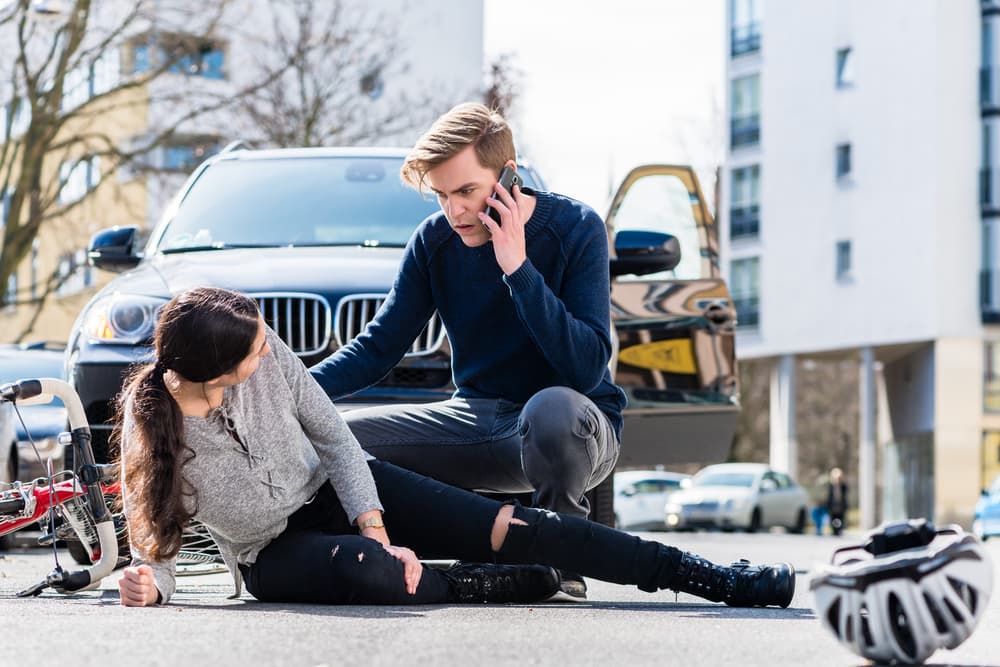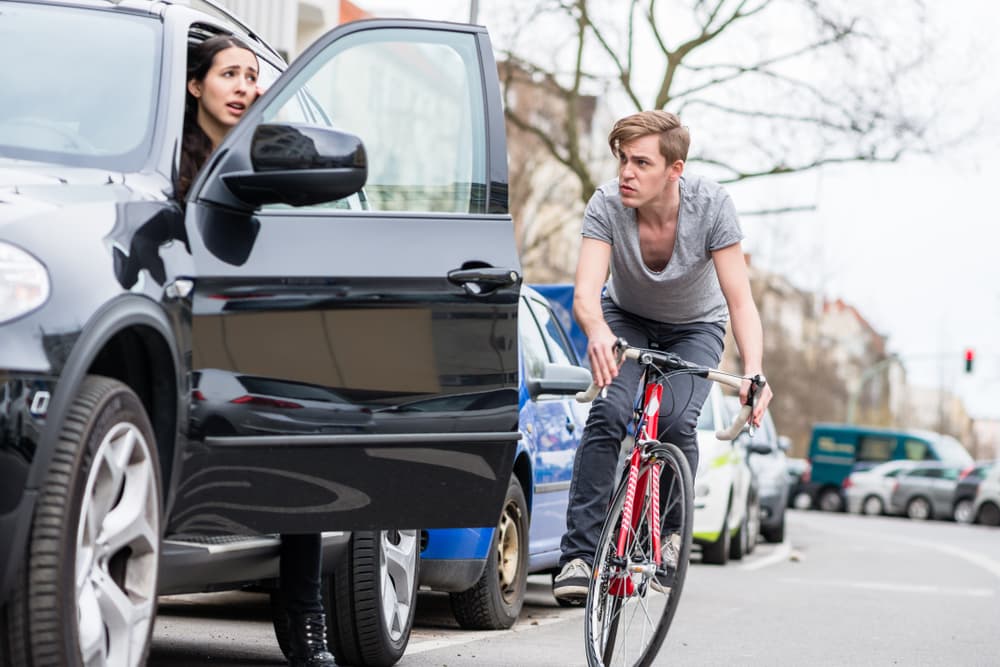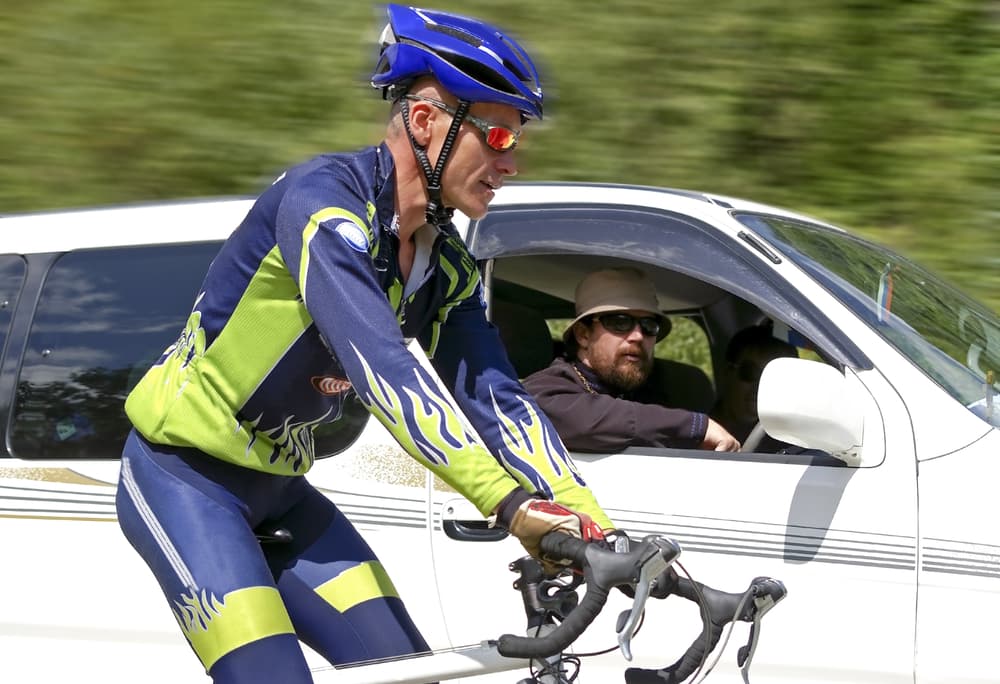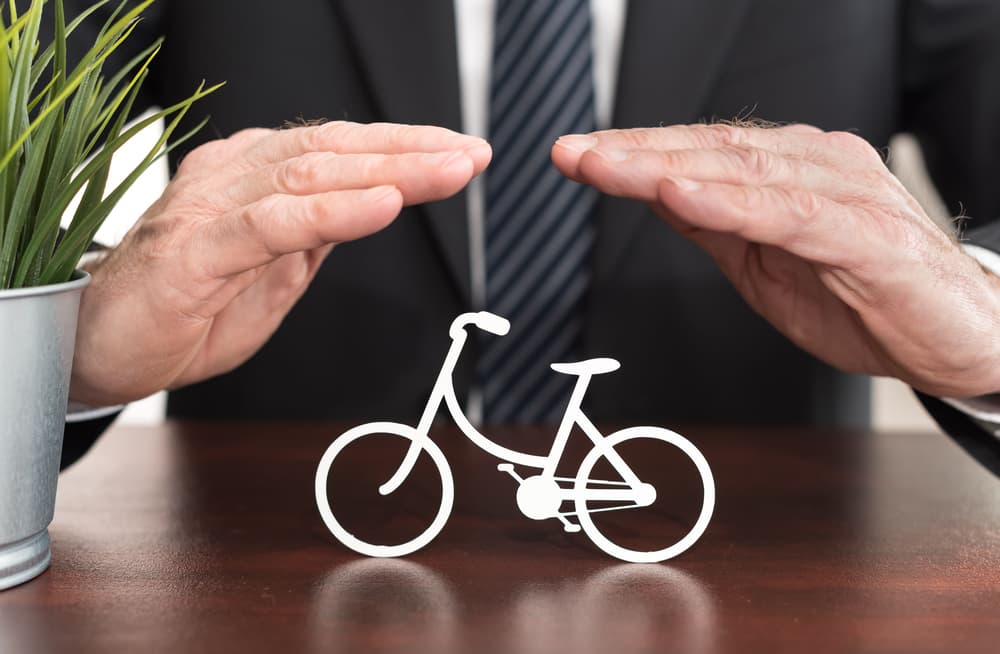Every year, an ever-increasing number of Americans choose cycling as an alternative to driving, getting a taxi (or Uber), or using public transportation.
Riding a bicycle is convenient, healthy, and cheap. However, the downside of bicycling is that cyclists have to share the road with car drivers and are often exposed to high-risk situations.
Unfortunately, cyclists may be involved in many different types of bicycle accidents, which can result in debilitating injuries, disabilities, and death due to the inherent vulnerability of cyclists.
No matter what type of bicycle accident injured you, seek the assistance of a Henderson bicycle accident lawyer who can pursue the compensation you are entitled to.
Types of Bicycle Accidents

Some of the most common types of bicycle accidents include:
Riding Against Traffic
Riding against the traffic flow is a dangerous choice for cyclists.
This behavior increases the likelihood of head-on collisions as drivers may not expect a bicycle to come from that direction.
- Example: A bicyclist decides to ride on the left side of a two-way street against the flow of cars. An oncoming vehicle turns right onto the street and collides with the bicyclist.
Exiting from a Private Drive
Accidents often occur when a cyclist exits from a private driveway onto a road, hits a pedestrian, another cyclist, or a vehicle, or when a vehicle exiting a driveway collides with a cyclist on the sidewalk or road.
- Example: A cyclist rides out of a shopping center parking lot directly onto a busy sidewalk and into the bike lane, where a vehicle making a right turn strikes the cyclist.
Dooring Accidents

Dooring incidents happen when the door of a parked vehicle is suddenly opened in the path of an unsuspecting cyclist.
This can result in the cyclist crashing into the door or swerving into traffic to avoid it, potentially leading to serious injury.
- Example: A driver parked along a city street suddenly opens their car door without looking, and a passing bicyclist runs into the door and is thrown onto the road.
Rear-End Collisions
A rear-end collision occurs when a vehicle crashes into the bicycle from behind.
This can happen due to driver distraction, the cyclist’s sudden stop, or when the bike is in the car’s blind spot.
- Example: A cyclist is traveling straight ahead when a distracted driver fails to keep a safe distance or notices the bike slowing down, colliding with the bicycle’s rear.
Sideswipe Accidents
This type of accident involves a vehicle and a bicycle impacting each other from the side.
Sideswipes can occur when a vehicle attempts to overtake a bicyclist without sufficient space or misjudges the distance between them.
- Example: A cyclist is maintaining a straight line in a bike lane when a vehicle attempts to pass too closely and sideswipes the cyclist, causing them to crash.
Bicyclists Crossing a Vehicle’s Path
When a cyclist crosses the street or a vehicle’s path without yielding or when visibility is poor, the risk of being struck increases. This type of collision is prevalent at intersections where paths cross.
Statistics show that bicyclists crossing a vehicle’s path account for about 30 percent of all bicycle crashes.
- Example: A bicyclist attempts to cross a four-lane road without a crosswalk just as an oncoming car is approaching, leading to a collision.
Right Cross Collisions
Right cross collisions happen when a vehicle and a cyclist approach an intersection from perpendicular directions, and the vehicle turns right, colliding with the cyclist going straight through the intersection.
- Example: A bicyclist is proceeding straight through an intersection with a green light, and a car making a right turn on red fails to see the bicyclist and turns into them.
Left Cross Collisions
Left cross-collisions occur similarly to right cross-collisions but involve a vehicle turning left.
Here, the motorist either fails to see the cyclist or misjudges the cyclist’s speed.
- Example: A vehicle waiting to make a left turn does not see an oncoming bicyclist and turns left, causing an accident as the cyclist enters the intersection.
Vehicles Overtaking Bicyclists

These accidents take place when a vehicle attempts to pass a bicycle and misjudges the necessary space or distance, leading to a crash.
This type of accident can result in severe injuries due to the high speed and force of impact.
- Example: A bicyclist is riding on the shoulder of a rural road. A car attempting to overtake the cyclist does not leave ample space, and the side mirror of the car clips the cyclist’s handlebar, resulting in a fall.
What Causes Bicycle Accidents?
A bicycle accident may occur for a wide range of reasons.
Common causes of traffic accidents involving cyclists include:
- Failure to yield. One of the most common causes of cycling accidents is the failure to yield the right of way. When drivers or cyclists do not adhere to rules governing who has priority at intersections or on roads, collisions can occur, leading to severe injuries or fatalities.
- Low visibility. Bicycle riders are more vulnerable in low visibility conditions, such as at night, during heavy rain, or in fog. The smaller silhouette of a cyclist compared to a car or a truck can make them harder to spot, increasing the risk of an accident.
- Distracted driving. Distraction is a problem for both cyclists and motorists. Drivers may be distracted by their mobile devices, radios, or other activities within the vehicle. Similarly, cyclists can become distracted if they are using their phones, listening to music, or not paying full attention to their surroundings. Studies show that accidents related to distracted driving are more common between 6 p.m. and midnight (more than 33 percent) than at other times.
- Following too closely. Tailgating or following too closely can lead to accidents, especially if a cyclist needs to stop quickly and suddenly. Drivers may not have enough time to react, leading to rear-end collisions.
- Speeding. High speeds reduce reaction times for cyclists and motorists. When either party is speeding, the likelihood of an accident increases. High-speed impacts are also far more likely to result in severe injury or death.
- Weaving through traffic. Cyclists sometimes weave between cars, especially in heavy traffic, engaging in what is known as “splitting lanes.” This unpredictable movement can catch drivers off guard and leave little time to avoid a collision, not to mention that the practice is illegal in most states.
- Making unsafe lane changes. Making unsafe lane changes without checking mirrors or blind spots can lead to a driver sideswiping a cyclist. Drivers may not see cyclists in time to avoid hitting them, especially when changing lanes abruptly.
- Running red lights or stop signs. Both cyclists and drivers are guilty of running red lights and stop signs on occasion. This behavior is particularly dangerous for cyclists, who are less protected than vehicle occupants in the event of a crash.
- Impaired driving. Driving under the influence of alcohol or drugs is a serious problem that severely impairs judgment, reaction times, and overall control. Impaired driving can be extremely dangerous for cyclists, who may not be seen or may be unable to avoid an impaired driver who is operating their vehicle unpredictably.
Multiple factors may contribute to the collision in some cases, such as a driver being distracted and running a red light. A bike accident attorney can determine what caused the accident and establish liability.
Factors That Affect the Severity of a Bicycle Accident
More than 41,000 bicyclists are injured, and about 1,000 others die in collisions with other motor vehicles every year.
How bad the bicyclist’s injuries are depends on:
- The size of vehicles involved. Larger and heavier vehicles can cause more damage to bicyclists than smaller ones. The consequences can be devastating and fatal when bicycles collide with trucks or buses.
- The speed at which the bicycle and other vehicles are traveling. The rate at which the bicycle and other vehicles travel greatly contributes to the impact force in an accident. Higher speeds typically result in more severe injuries and increase the risk of death.
- The number of vehicles involved. Accidents involving multiple vehicles can complicate the dynamics of the crash, potentially increasing the damage and injuries sustained by a bicyclist.
- Whether anyone is impaired by alcohol or drugs. If anyone involved in the accident is under the influence of alcohol or drugs, reaction times and decision-making abilities are impaired, increasing the likelihood of a severe crash.
- The time at which the accident occurs. Accidents that occur at night or during low light conditions are often more severe because of reduced visibility and less time to react to hazards.
- The age and health condition of the bicyclist. Younger and healthier riders might sustain less severe injuries compared to older individuals or those with pre-existing health conditions. Statistics show that people aged 65+ account for over 18 percent of all bicyclists killed in traffic crashes. However, this is very situational and does not diminish the importance of staying safe at any age.
- Whether the bicyclist is wearing a helmet. Wearing a helmet and other protective gear can significantly reduce the severity of head injuries and improve overall outcomes for bicyclists in the event of a crash.
Regardless of how severe your injuries are, you may be entitled to compensation if the bicycle accident was the result of someone else’s negligence.
How a Bicycle Accident Lawyer Can Help if You Were Hurt

If you or your loved one was involved in a bicycle accident, you might be wondering, “Do I need a lawyer, or can I handle my legal case on my own?”
Here are some of the ways a bicycle accident attorney can help you if you suffered an injury:
- Investigate the cause of the accident. A prompt and in-depth investigation is crucial when it comes to establishing how the accident happened and who is at fault for it. A skilled lawyer may visit the crash site to gather evidence, obtain available traffic camera footage, speak with witnesses, and analyze police reports. They use this evidence to construct a strong case that supports your claim.
- Identify all responsible parties. Responsibility for a bicycle accident can fall on multiple parties, from the driver who collided with you to the city responsible for maintaining safe roads. A dedicated lawyer will evaluate your case from every angle to ensure that all potentially responsible parties are identified, increasing the chance of an adequate settlement for you.
- Provide guidance as the case progresses. The legal proceedings following a bicycle accident can be complex and confusing. An experienced lawyer will guide you through each step, demystify the legal jargon, and ensure you understand your rights and options. They will also advise you on the likely outcomes of your case and work tirelessly towards the best possible resolution.
- Negotiate with the insurance company. Dealing directly with insurance companies can be daunting and is often a recipe for a lowball settlement. Insurance adjusters are trained to minimize payouts. Having a lawyer on your side puts you on a more even footing. Lawyers understand insurance companies’ tactics and what it takes to negotiate to ensure you receive the compensation you deserve.
- Settle your claim for the maximum amount. A lawyer will have the knowledge and experience to value your claim accurately, taking into account current and future medical expenses, lost income, diminished quality of life, and any other damages you have suffered. They fight to get you the maximum compensation possible through negotiation or court proceedings.
- Help file a lawsuit. If the insurance company is unwilling to offer a fair settlement, your lawyer can file a lawsuit. This step requires a deep understanding of legal procedures and the ability to present a compelling argument in court. A skilled lawyer will be prepared to litigate and advocate for you throughout the trial.
A personal injury attorney can provide you with the assistance you need to get your life back on track after any type of bicycle accident and fight for the compensation you deserve. Seek your free consultation today.
